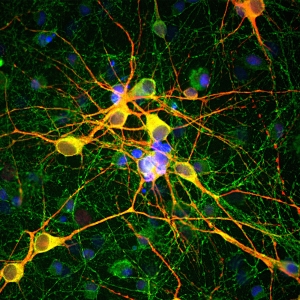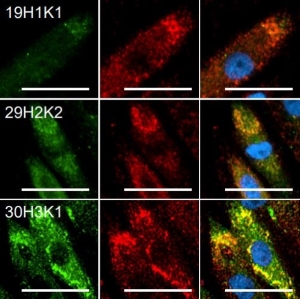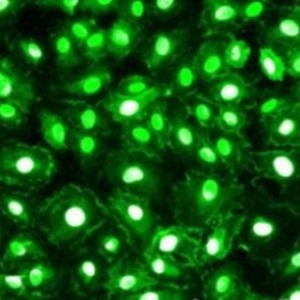Product Details
Product Sizes
| Size | List Price | Price | Cart |
|---|---|---|---|
| 100 ul | $303.00 | Add to Cart |
Glial Fibrillary Acidic Protein (GFAP) is strongly and specifically expressed in astrocytes, Bergmann glia and certain other glia in the central nervous system, in satellite cells in peripheral ganglia, and in non-myelinating Schwann cells in peripheral nerves (1-3). GFAP expression is also seen in developing neural stem cells and GFAP levels may greatly increase in regions of CNS injury or disease (4), and point mutations in the GFAP gene are causative of Alexander's disease (5). Antibodies to GFAP such as MCA-2A5 are useful for visualizing glia and monitoring developmental, disease and damage related CNS alterations. |
Images
Immunofluorescent analysis of an adult rat cerebellum section stained with mouse mAb to GFAP, MO22101, dilution 1:500, in red, and costained with chicken pAb to parvalbumin, dilution 1:2,000, in green. The blue is DAPI staining of nuclear DNA.
Western blot analysis of equal amount of total protein from different tissue lysates and recombinant proteins solutions using mouse mAb to GFAP dilution 1:2,000 in green: [1] protein standard (red), [2] rat brain, [3] rat spinal cord, [4] mouse brain, [5] mouse spinal cord, [6] pig brain, [7] rat recombinant GFAP, [8] human recombinant GFAP. Bands around 50kDa correspond to alternative transcripts and proteolytic products of GFAP.






